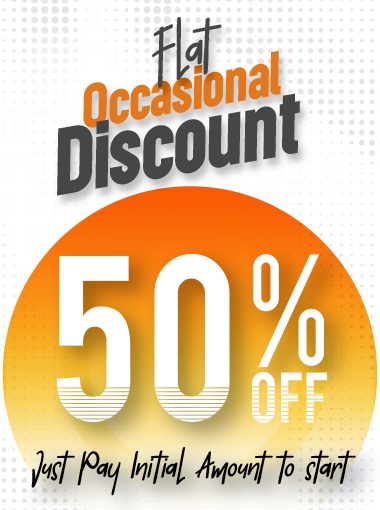How to Create Graphic Design for a Packaging Material of a Brand
Creating graphic design for packaging material is a multifaceted process that demands a strategic approach to effectively represent a brand and its product in every custom web design. At the core of this endeavor is a thorough understanding of the brand identity and the specific product for which the packaging is intended. Before delving into design elements, it is crucial to comprehend the brand's values, target audience, and the unique selling points of the product via affordable web design service help. This foundational knowledge provides the groundwork for a packaging design that not only captures attention but also conveys the essence of the brand.
Once armed with a comprehensive understanding of the brand and product in unique web design, the next step involves researching competitors and current market trends. Analyzing competitors' packaging designs provides insights into effective strategies within the industry. Simultaneously, staying abreast of market trends via cheap web design deal helps in identifying design elements that resonate with contemporary consumer preferences. This dual awareness enables designers to strike a balance between differentiation and alignment with prevailing market aesthetics.
Defining the packaging structure with the help of a best web design is a pivotal step in the process. Whether it is a box, bag, bottle, or another form, the physical dimensions and structure significantly influence the layout and design elements. The packaging structure not only needs to be visually appealing but also practical and feasible for the intended product.
Buy web design service for creating a mood board is an excellent technique to visually synthesize ideas and inspirations. This board serves as a reference point for the overall design direction, incorporating colors, textures, typography, and imagery that align with the brand and product. The mood board helps in establishing a cohesive visual language that permeates the entire packaging design.
Key design elements, such as the brand logo, tagline, product name, and essential legal information, should be identified early in the design process with experts’ guide from web design service online. Determining the hierarchy and positioning of these elements ensures that the most crucial information is prominently featured on the packaging. Establishing a clear visual hierarchy guides the consumer's attention to the most critical aspects of the packaging.
Color selection and typography play pivotal roles in creating a visually striking and coherent packaging design. The chosen color palette should align with the brand identity and evoke the desired emotions in the target audience. Typography, besides being aesthetically pleasing, should be legible and complementary to the overall design aesthetic.
Incorporating imagery and graphics is another crucial step in packaging design. High-quality images of the product, relevant illustrations, or graphics can enhance the product's appeal and communicate its features and benefits effectively. The visuals should align with the brand message and resonate with the target audience.
An effective packaging design goes beyond aesthetics; it tells a story. Therefore, focus on brand storytelling by using the packaging as a canvas to communicate the brand's values, history, or the inspiration behind the product. Engaging storytelling creates a connection with consumers, elevating the packaging from a mere vessel to an immersive brand experience.
Practical considerations, such as barcode placement, product information, and legal requirements, must be integrated seamlessly into the design. Striking a balance between creativity and adherence to regulatory standards ensures that the packaging is not only visually appealing but also compliant with industry norms.
Generating mockups and prototypes allows designers to visualize how the design will appear on the actual packaging material. This step is crucial for testing the design in a real-world context and making adjustments if necessary. The final design should be refined based on feedback gathered from stakeholders, including the marketing team, product managers, and potential consumers.
Collaboration with printing professionals is essential to ensure that the design translates well to the chosen packaging material. Factors such as print quality, finishes, and special printing techniques should be considered to enhance the visual appeal of the final product.
Providing the finalized design files to the packaging manufacturer marks the preparation for production. Attention to details, such as color profiles and file formats, ensures a smooth production process. After the packaging is produced and the product is in the market, ongoing evaluation and feedback gathering contribute to continuous improvement and potential iterations for future releases.
Related Blogs
- Web Design Accessibility: Ensuring Inclusivity for All Users
- How to Create a WordPress Website?
- How to Use Google Analytics for Digital Marketing?
- How to Deal with Platform Compatibility Challenges in the Website Design Process
- Process of Metaverse Website Development?
- Tips to Integrate Data Science in Website Development
- Importance of URL in a Website Design
- How to Include Cultural Sensitivity in Website Design
- Tips for Keeping Backups in Website Development
- Remarketing Advertising Trends in 2024
- Four Pillars of Website Development and Tricks to Apply It
- Importance of Scriptwriting in Social Media Digital Marketing
- How to Create Graphic Design for a Packaging Material of a Brand
- How to Conduct SERP Analytics and Tracking in Digital Marketing
- How to Differentiate a Logo Designed for Video Game?
- Tips to Develop Angular JS Website Development
- Integration of Scroll-triggered Animations in Website Design
- Describe What Is Microsoft SharePoint and Its Importance for Website Development
- Tips to Download Resources (Webpage, Files, Videos) From A Website
- Suggest Importance of Bootstrap Process in Website Development
- How to Implement Web Design in Semplice Site Builder?
- Guide How to Design Content for Digital Marketing Newsletter
- How to Develop Website Based On PSSE UEL Model?
- File Format and Usage Guidelines Assistance for Logo Design
- Tips to Future Proof Website Development Process using New Technologies
- How to Use Mailchimp for Custom Digital Marketing Campaigns
- Understanding Custom Experimental Navigation in Website Design
- Importance of Domain Name in Website Development



